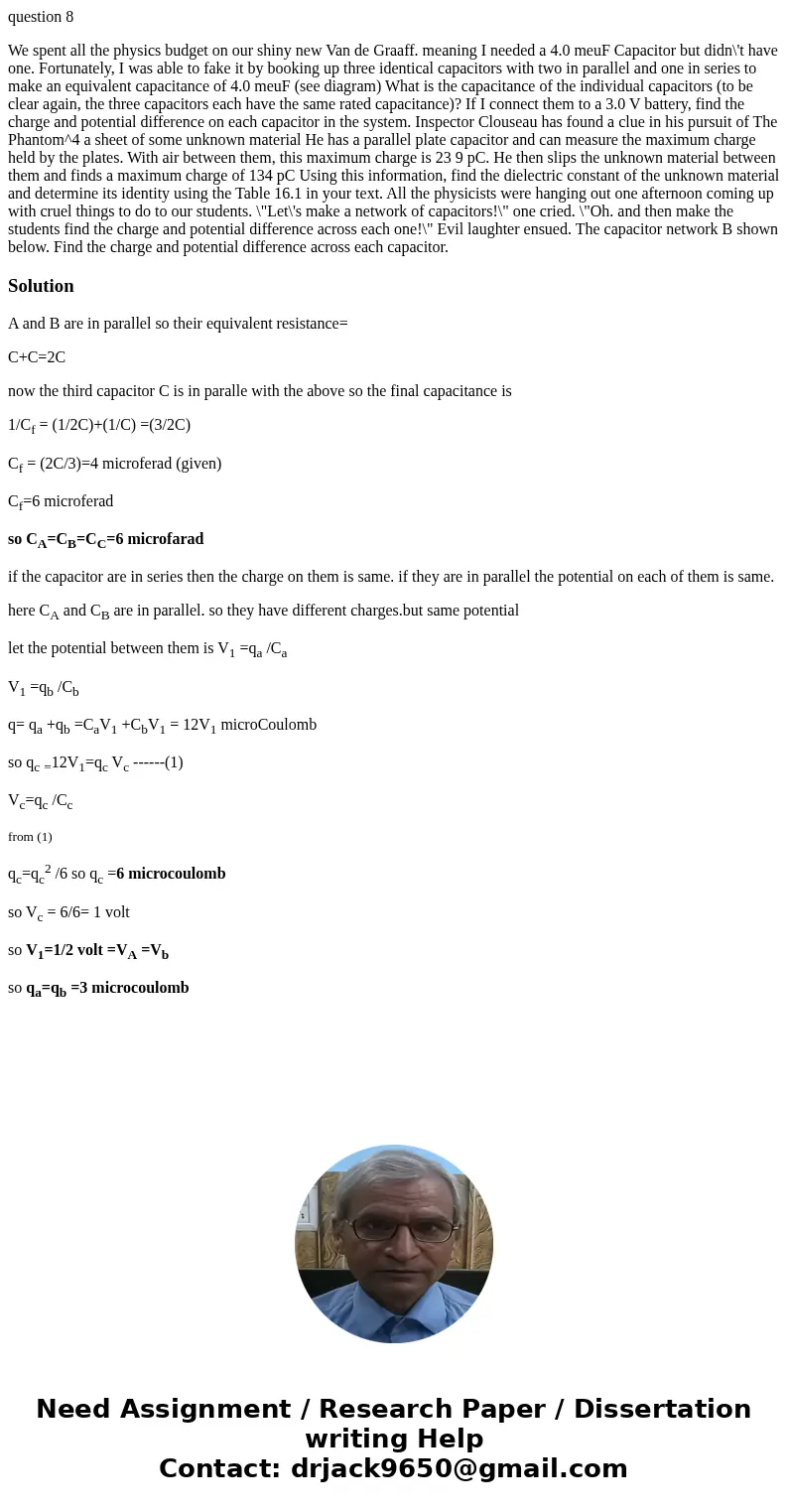question 8 We spent all the physics budget on our shiny new
question 8
We spent all the physics budget on our shiny new Van de Graaff. meaning I needed a 4.0 meuF Capacitor but didn\'t have one. Fortunately, I was able to fake it by booking up three identical capacitors with two in parallel and one in series to make an equivalent capacitance of 4.0 meuF (see diagram) What is the capacitance of the individual capacitors (to be clear again, the three capacitors each have the same rated capacitance)? If I connect them to a 3.0 V battery, find the charge and potential difference on each capacitor in the system. Inspector Clouseau has found a clue in his pursuit of The Phantom^4 a sheet of some unknown material He has a parallel plate capacitor and can measure the maximum charge held by the plates. With air between them, this maximum charge is 23 9 pC. He then slips the unknown material between them and finds a maximum charge of 134 pC Using this information, find the dielectric constant of the unknown material and determine its identity using the Table 16.1 in your text. All the physicists were hanging out one afternoon coming up with cruel things to do to our students. \"Let\'s make a network of capacitors!\" one cried. \"Oh. and then make the students find the charge and potential difference across each one!\" Evil laughter ensued. The capacitor network B shown below. Find the charge and potential difference across each capacitor.Solution
A and B are in parallel so their equivalent resistance=
C+C=2C
now the third capacitor C is in paralle with the above so the final capacitance is
1/Cf = (1/2C)+(1/C) =(3/2C)
Cf = (2C/3)=4 microferad (given)
Cf=6 microferad
so CA=CB=CC=6 microfarad
if the capacitor are in series then the charge on them is same. if they are in parallel the potential on each of them is same.
here CA and CB are in parallel. so they have different charges.but same potential
let the potential between them is V1 =qa /Ca
V1 =qb /Cb
q= qa +qb =CaV1 +CbV1 = 12V1 microCoulomb
so qc =12V1=qc Vc ------(1)
Vc=qc /Cc
from (1)
qc=qc2 /6 so qc =6 microcoulomb
so Vc = 6/6= 1 volt
so V1=1/2 volt =VA =Vb
so qa=qb =3 microcoulomb

 Homework Sourse
Homework Sourse